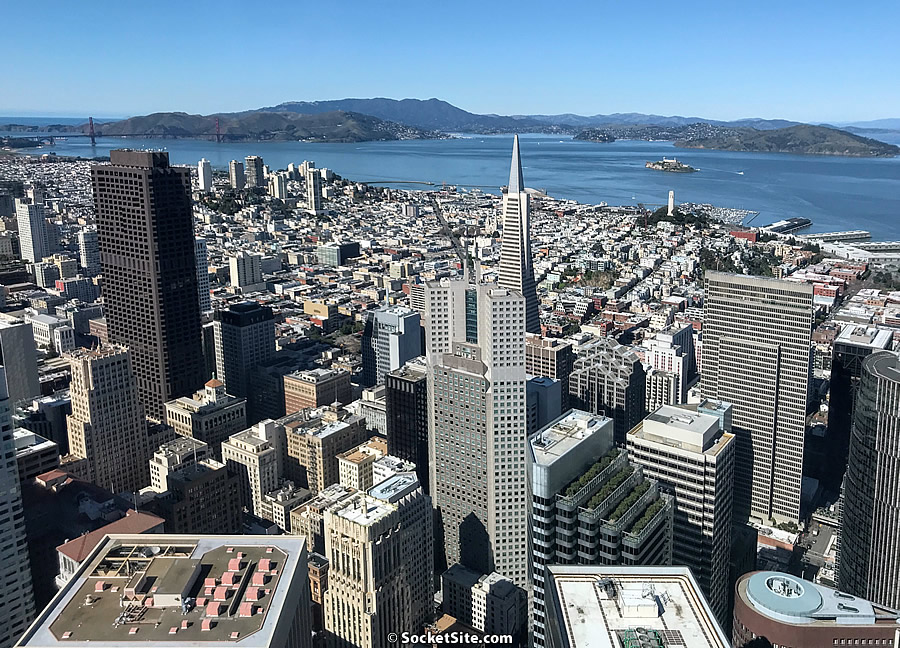Having ticked down a percent in October, the weighted average asking rent for an apartment in San Francisco has since dropped another 3 percent to $3,575 per month and has declined for three months in a row with what would appear to be typical seasonality back in play, at lower rates, versus an extended recovery.
In fact, while the average asking rent in San Francisco is 8 percent higher than at the same time last year and 17 percent higher than its pandemic driven low, it’s still 13 percent lower than prior to the pandemic and nearly 20 percent below its 2015-era peak of nearly $4,500 a month. Keep in mind that the average apartment in San Francisco measures over two bedrooms when counting a studio as having one.
At the same time, the number of apartments listed for rent in San Francisco jumped around 15 percent last month and is now 5 percent higher than at the same time last year, 20 percent higher than prior to the pandemic, and at a 13-month high.
Our analysis of the rental market in San Francisco is based on over 165,000 data points going back to 2004 that we maintain, normalize and index on a monthly basis. We’ll keep you posted and plugged-in.

“Keep in mind that the average apartment in San Francisco measures over two bedrooms when counting a studio as having one.”
But a studio doesn’t have a separate bedroom. Conventional nomenclature would call that 0 bedrooms. Of course, it does typically have a place to sleep. So I guess I understand why you’d count it that way for your calculation.
I guess the takeaway is that there are more 2+ bedroom units out there than <2 bedroom units? That's interesting but not too surprising. Most of the legacy housing (and a lot of newer housing too) is larger; it's only recently that economic and demographic changes have made smaller units the thing to build.
I’d love to see SS’s data presented in a little more detail and perhaps broken out by # of bedrooms (and without conflation studios and 1bd). In my data on Berkeley, a 1bd is priced 20% higher than a studio even at the same floor area.
To be clear, we track studios and one-bedrooms separately and don’t conflate their rents. Our notation that “the average apartment in San Francisco measures over two bedrooms when counting a studio as having one” is simply for context with respect to the average rent and mix of available units.
On the SF MLS, studio units are considered zero bdrm. Which can result in display of info such as 5 unit apartment bldg with 5 bathrooms and no bedrooms.
If rental prices are indeed softening, well no worries! The appsters of the gig economy are here to help out the poor, downtrodden landlords! From last week, Airbnb Taps Big Landlords to List Rentals in Bid to Find Hosts:
Yes, San Francisco is one of the initial markets.
The solution to the problems caused by capitalism is always more and better capitalism.
Well since China, Russia, North Korea and Cuba are all examples of the glories of Marxism which claim to be perfect and use violence and massive police force to enforce those “glories”, I appreciate more and better capitalism. If you posted about the problems of Marxism in China, you would have already been confronted by the authorities.